Qobuz, a discreet yet remarkable music streaming service, has carved its niche alongside market behemoths. Its journey is a testament to the power of original user experience and impeccable audio quality, which have captivated a loyal following. The history of Qobuz is a treasure trove of lessons, and its unique selling points will pique your interest!
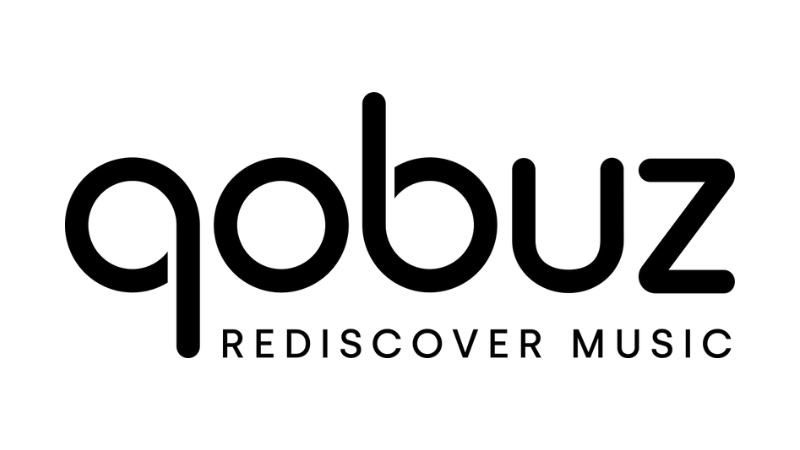
The history of Qobuz: when did it start?
Qobuz was launched in France in 2007. Its founder is Yves Riesel, a producer and label founder. Yves Riesel has a solid background in music: first as a journalist, then as a producer of shows and concerts, before founding his label, Abeille Musique, with which he enjoyed some success. Specializing in classical music, he soon turned his attention to the booming digital market.
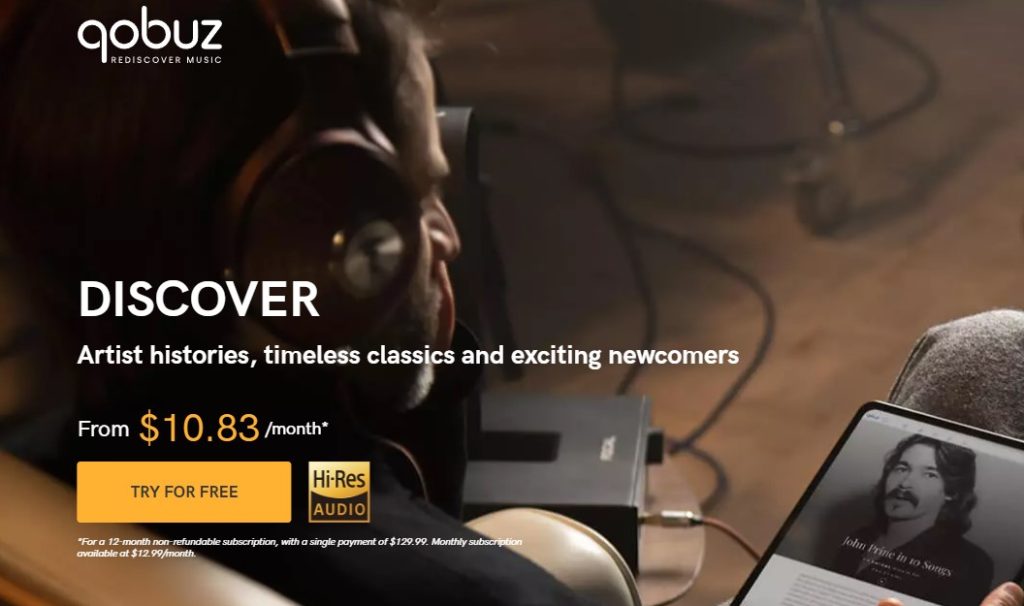
Qobuz, founded by Yves Riesel and Alexandre Leforestier, had a challenging start in 2007. It faced tough competition from Deezer, a more powerful player with primary corporate backing. However, in 2015, Qobuz was acquired by the Xandrie company, which saved it from the brink of bankruptcy in a highly competitive and saturated market.
It was time to reinvent the company, and the new CEO, Denis Thébaud, changed everything. He focuses exclusively on a Premium offer, with no free alternatives, and proposes a subscription price higher than his competitors for his most expensive offer.
Speaking to La Tribune, the CEO explains:
“Qobuz targets audiophiles and music lovers who love a particular genre of music. Only 25% of our subscribers opt for the entry-level offer – compared with 40% for our mid-range offer and 35% for our “prestige” offers with high resolution. We are, therefore, positioned on a CSP+ profile. Our audience is also older than our competitors.”
Switching gears
The company is reworking its applications and modernizing its website while investing in marketing and communications to boost awareness.
Until 2020, Qobuz is linked to Gramophone magazine, which specializes in classical music, thus maintaining its ties with this musical genre. That same year, amid the COVID-19 pandemic, Qobuz made a positive impact by deciding to redistribute 100% of revenues generated by new registrations to artists and contributors on its platform in April.

Georges Fornay, CEO of Qobuz, expressed the company’s unwavering commitment to respecting artists’ work and ensuring the quality of their music is preserved. This dedication is why Qobuz promotes studio-quality music, believing that talented artists deserve a fair chance for their music to be discovered, curated, and compensated.
The big break in the history of Qobuz
In a significant move in its history, Qobuz expanded into the United States in February 2019, twelve years after its launch. This marked an essential step in its market development, as it directly competed with TIDAL, the only service at the time that could match TIDAL‘s audio quality. While Qobuz didn’t match TIDAL’s popularity, its decision to expand into the U.S. was a positive sign of its growth potential.

To prepare for its expansion, Qobuz recruited Dan Mackta as managing director. He had previously worked as marketing director for the RCA and Jive Records labels. This launch follows the opening of offices in New York in 2018. In 2020, it was announced that Qobuz had successfully raised 10 million euros to finance its expansion, in addition to the 12 million raised in 2019.
Slow growth: the history of Qobuz
Development is slow and complicated, but it’s a long-term process. Attempting to position ourselves in the audiophile segment is risky because it can only be done if these users already own high-quality listening equipment. With average headphones and speakers, there’s little interest in choosing Qobuz over Spotify or its competitors. Deezer, Apple Music, TIDAL, and Amazon Music offer high-quality audio and other features. Qobuz, on the other hand, offers fewer features than Spotify in terms of audio quality.
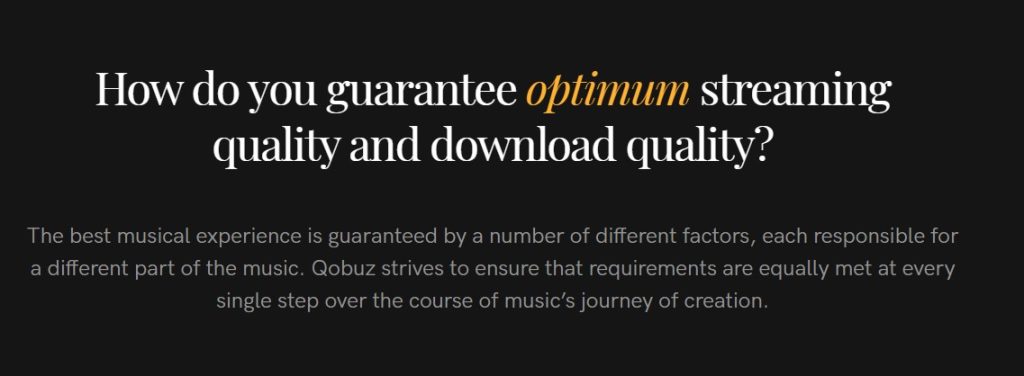
Dan Mackta is well aware of these barriers. Before the launch of Qobuz, he told Rolling Stone magazine:
“Likely at some point, the mainstream streaming services will see the value of a more premium, high-res option […] The question is, will it be this year or in five years? And hopefully, Qobuz will have traction in the U.S. by then.”
Many experts claim that audio quality should be increasingly important when choosing a streaming platform. If this is true, then Qobuz has an actual card to play! And the long-term investment may well pay off.
Promises
Like TIDAL, its main competitor in the field, Qobuz has based its expansion on audio quality. Qobuz offers a FLAC listening format, and there’s not much better on the market. As with each of our articles, we base ourselves on our personal listening experience and what users say about the service. From our observations, Qobuz appears to be the most popular platform in the streaming world regarding audio performance.

The Qobuz website devotes a long web page to its audio proposition and bias. Qobuz boasts that its users can listen to music in the conditions in which it was created as if they were in the studio with the artists. For users, this guarantees optimum precision in reproducing voices and instruments. For artists, sound engineers, and others involved in creating a song, it showcases their work.
Closer and closer
This desire to be as close as possible to artists’ intentions is reflected in a desire to strengthen proximity with its users. Unlike its competitors, Qobuz focuses on editorial and journalistic content. With music media and music journalism losing power, Qobuz is trying to reverse the trend. Its site displays a “Magazine” section, which functions as a music news site, with interviews, news, portraits, and reviews. The content is high quality, sometimes long and analytical, with a Premium logic. Qobuz positions itself as a cultural hub where everything is designed to give an impression of top-notch quality.
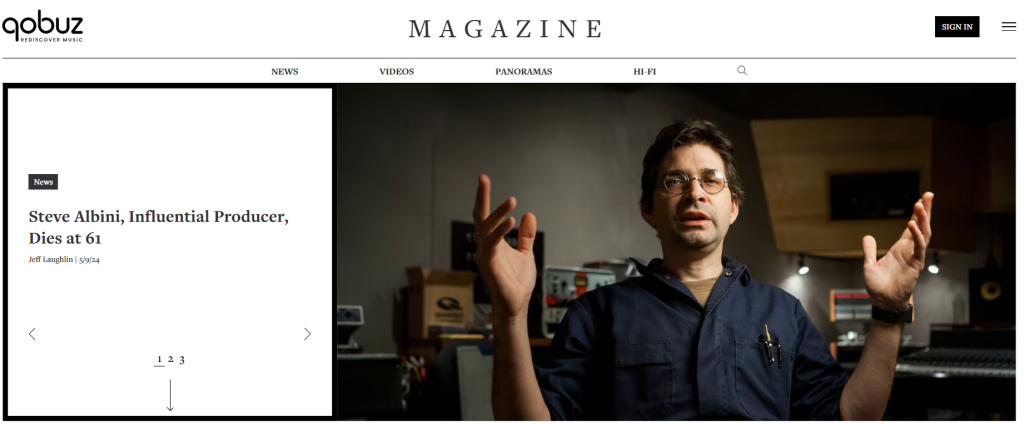
Qobuz also offers, via the “Staff Picks” the equivalent of recommendations from a record store. They are not necessarily adapted to your listening history but are selected by the Qobuz staff. Once again, the notion of proximity is essential.
Regarding the algorithm and, therefore, the digitally managed recommendation system, Qobuz offers “My Weekly Q” every Friday. Feedback on this selection has been mixed. Users say it could be more targeted, except for age and geographical location. Qobuz is still a long way from Spotify, the model of its kind.
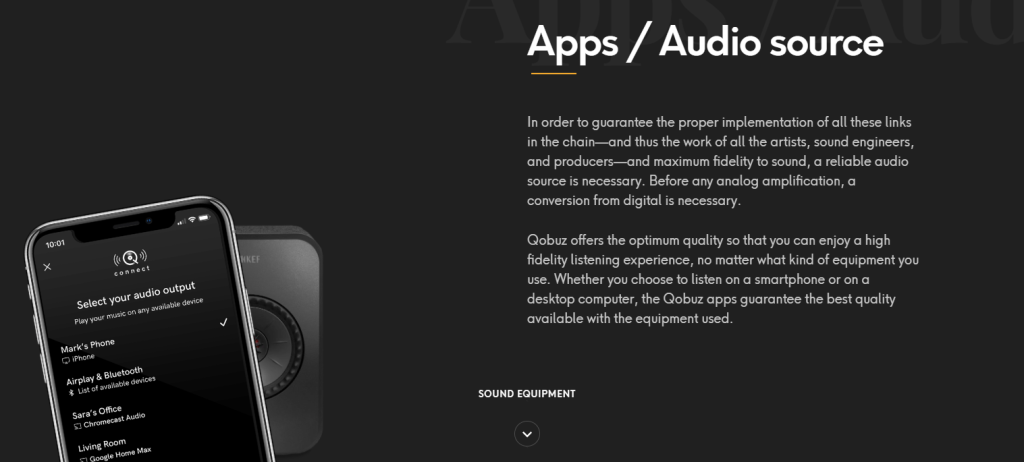
Overall, the Qobuz interface is focused on discovery and simplicity. It is sober, efficient, and focused on the music—so focused on music that it forgets to offer “social” functions, like its competitors, making it perhaps less fun.
Prices and subscription options
Regarding subscription offers, Qobuz offers a slightly higher entry point than some competitors. The price is 10.83$ per month for the Studio version, 14.99$ per month for the Duo version, and 17.99$ per month for the Family subscription. There are also “Sublime” plans, starting at 14.99$ per month: they will give you discounts on Hi-Res purchases.
You can find details of these offers directly on the Qobuz website.
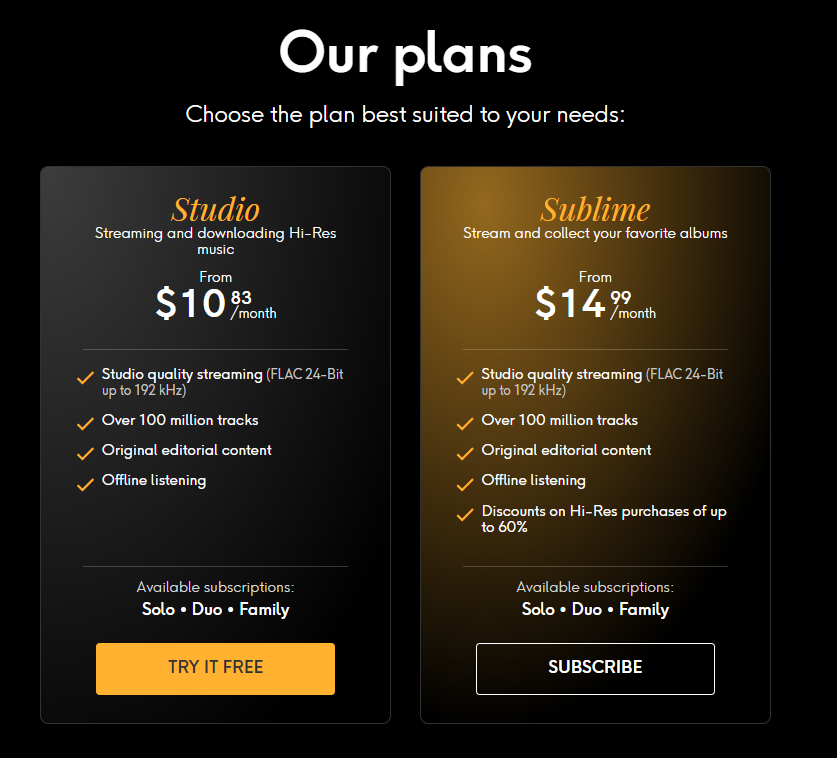
Note that if you’re a consumer of audiobooks, podcasts, and radio, Qobuz doesn’t offer these as part of its subscription. If this is one of your priorities, you must turn to another platform.
Why use Qobuz with Soundiiz?
As you know, Soundiiz always allows you to get the best out of your streaming platforms. Qobuz is no exception. On your Soundiiz homepage, you can manage your Qobuz playlists like you use Spotify, Deezer, or TIDAL playlists.
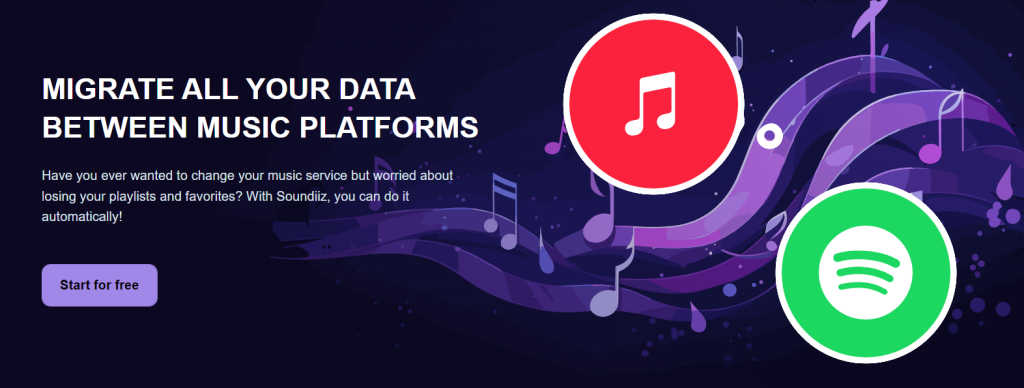
If you want to give it a try to Qobuz, using its free trial period, one of the main things that could prevent you from changing your music streaming platform is to lose all your music collection. It includes your playlists, favorite albums or tracks, and followed artists. And having to rebuild this library with a new service could be time-consuming and even impossible, depending on the size of your collection.
Soundiiz solves this by using an advanced matching process, allowing you to move quickly and with no effort to Qobuz from Deezer, Apple Music, Spotify, or any other platform. Then, use the playlist synchronization feature to keep your playlists updated.

Let’s say you want to quit Qobuz because it didn’t fit your needs. When you unsubscribe from a streaming service, your data and playlists can be deleted. Using Soundiiz, you can create backups of your Qobuz playlist as CSV. Convenient!
We hope you enjoyed this little history of Qobuz! You can now go to Soundiiz’s homepage to connect your Qobuz account and get the most out of it!



